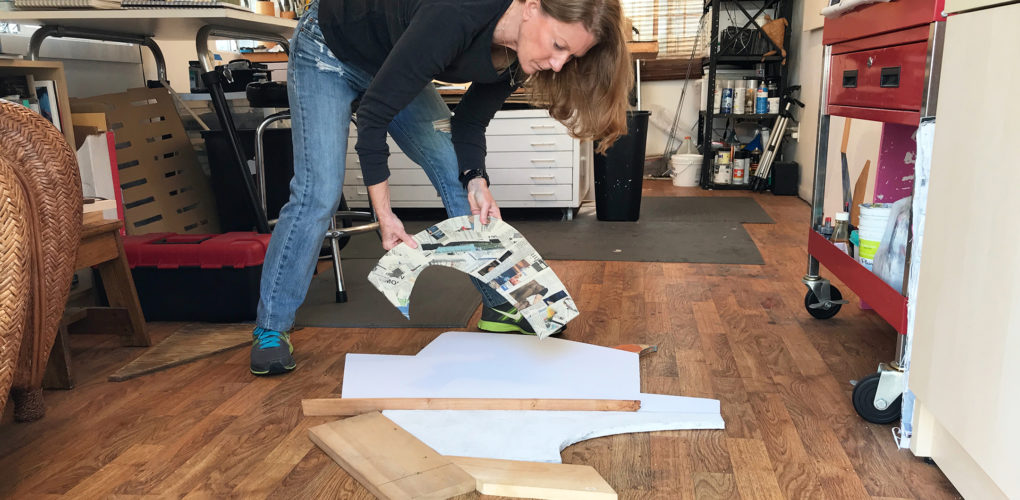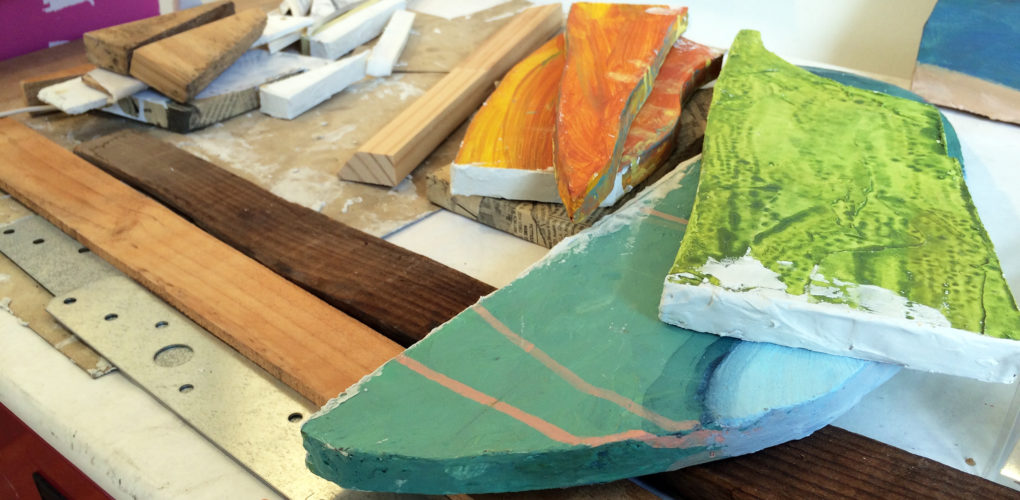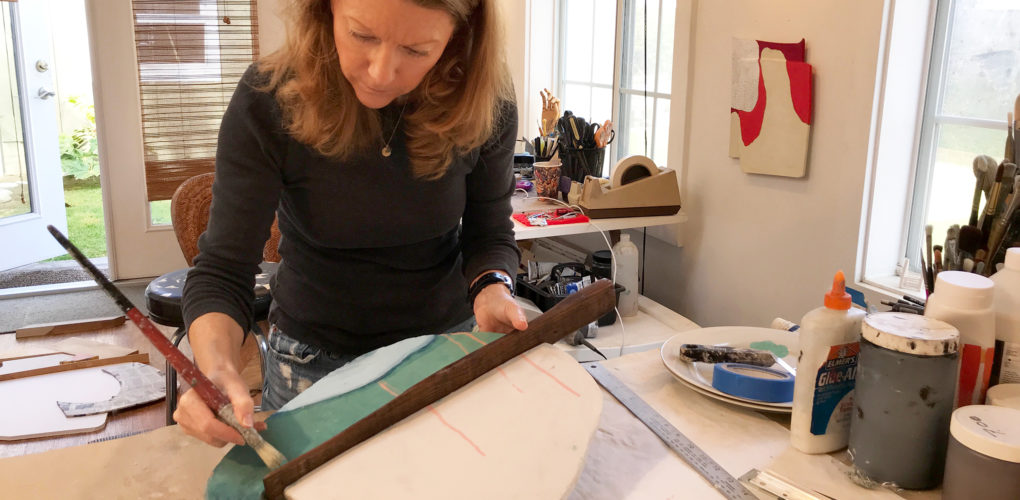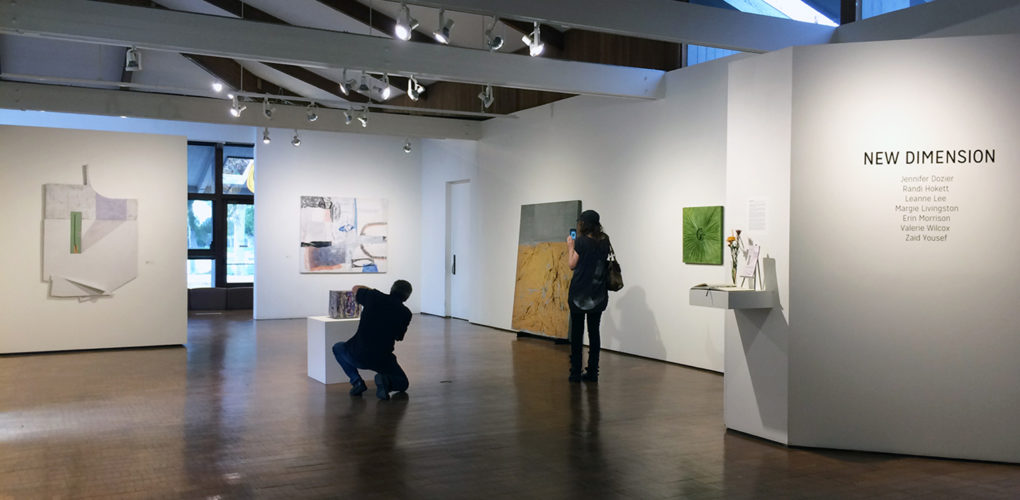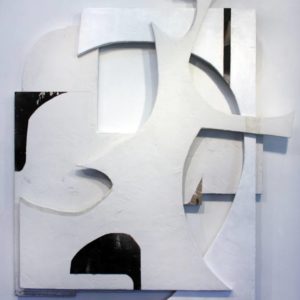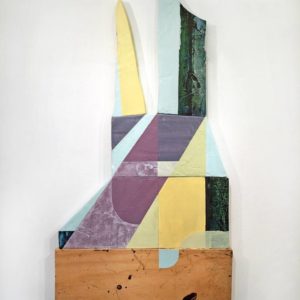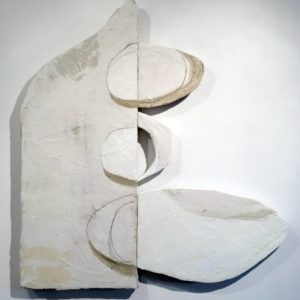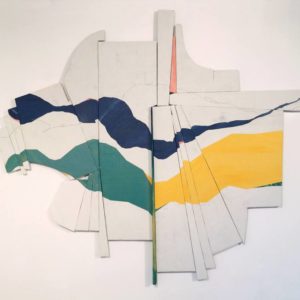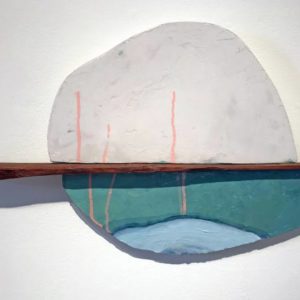Inside the Studio
 Exploring New Dimensions: Valerie Wilcox
Exploring New Dimensions: Valerie Wilcox
What are the major themes you pursue in your work?
My work presents a re-imagined understanding of our constructed environment and how our brain works to piece together diverse constituents. I form these hybrid dimensional constructions/paintings using discards, found elements and humble materials. Ideals of perfection versus inherent human fallibility are fundamental in my work. I embrace the mistakes. This follows the ideology of Wabi Sabi which is centered on the acceptance and beauty of transience and imperfection. It refers to quirks and anomalies arising from the process of construction, which add uniqueness and elegance to both natural and man-made objects. By working with both a two-dimensional plane and three-dimensional structure, I’m also exploring the idea of space and perception… but not necessarily the reality of it.
How did you first get interested in your medium, and what draws you to it specifically?
I’m always experimenting with different materials and my body of work, “Constructs”, allows me the freedom to really explore diverse mediums. I started working with found discards and humble materials when I found myself with a lot of remnants leftover from my design work and previous projects. I was looking for the opportunity and resources to develop more sculptural 3D compositions while still working as a painter. This idea of working has opened up new possibilities, letting me tell stories with added spatial ambiguities and unconventional outcomes.
How has your style and practice changed over the years?
I have been a painter and sculptor over the years, going back and forth between the different mediums, however not really combining them. This new way of making art really shifted my practice and I found that pulling in my skills from my design background of packaging, clothing design and graphics has really inspired and strengthened my practice.
Can you walk us through your process? Do you begin with a sketch, or do you just jump in? How long do you spend on one work? How do you know when it is finished?
I’m very process oriented. The idea for a piece is most often conceived from the materials and found pieces themselves. I sit with them for a while, sketch some ideas out, take pictures (which allows me some distance) until I get a starting point. I’m constantly moving pieces like a puzzle around until they reach the right balance of uneasiness, compromise and resolution.
I work on several ideas at a time so I can stay loose, without expectations on any one piece. Many times, one idea will end up mixed and shuffled into another idea. These constituent bits can hang around in my studio for months, even years. Then by just moving them around into different conversations with each other, an answer can happen quickly. Then the real work begins. I’ll work separately on individual parts using layers of different mediums such as wood, plaster, cardboard, paper maché, fabric, foam core and paint. I can then combine the parts into the complete piece. Anything can happen during this period, I leave myself completely open to new possibilities at every turn. That flexibility and spontaneity is very energizing and hopefully keeps the work from looking forced or too conscious.
How long do you spend on one work? How do you know when it is finished?
This process can take up to a few months or happen within a week, including the observation period. I try to make sure I’m not pushing my agenda on the work. I must be aware of anything that doesn’t feel right and be willing to stop, think, take it apart or change direction. I don’t always know when it’s complete, I need to sit with it and be very honest with myself. I think I just know when it’s finished when my gut says YES. And I have to know when to let go when it’s not working, put it aside and perhaps much later have an idea about how to revise it. Or, of course having a deadline will tell you when it’s done.
Prefer to work with music or in silence?
I mostly work with music except when I’m listening to a podcast or audio book. I listen to all types of music, just depends on where I am in the process and what mood I’m in.
Who are some of your favorite artists, and why?
Where to begin? I guess Tuttle has been an early influence because of his irreverence to the materials, how he sees things and his economy of means. Cy Twombly because his work is lyrical and feels unconscious. Helen Lundeberg’s wonderful color sense and architectural sensibilities. Richard Serra‘s large elegant sculptures and Eva Hesse, Liz Larner and Kishio Suga for their sculptural inventiveness and exploration. Also, more contemporary artists: Jessica Stockholder, Gedi Sibony, Sergej Jensen, Manfred Muller, Steve Rodin and Steve Degroot are all inspirational to me on many different levels.
